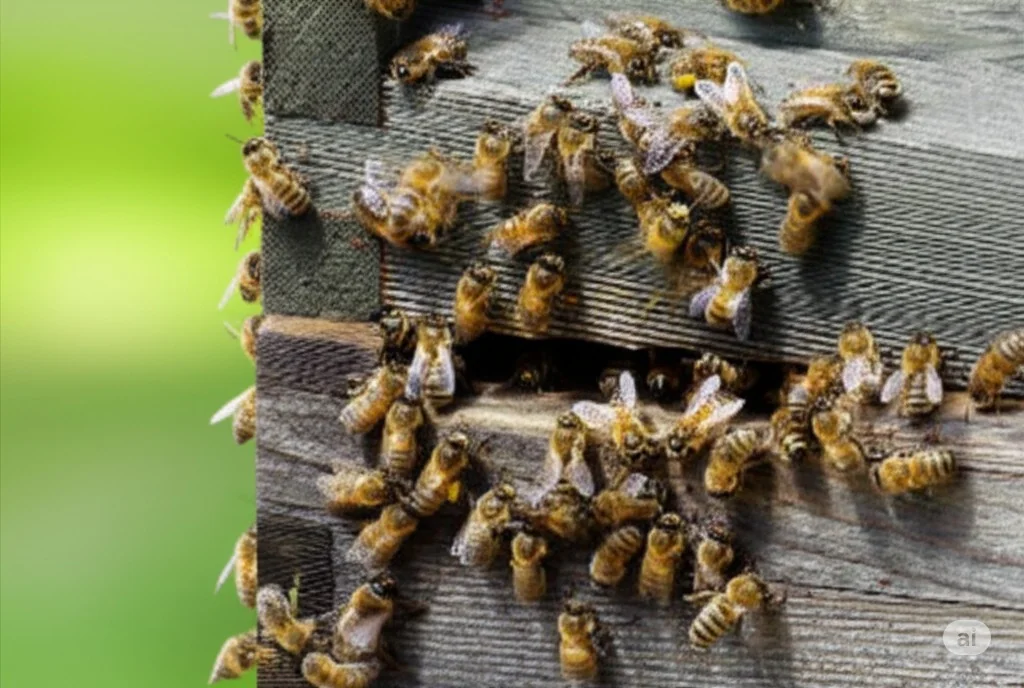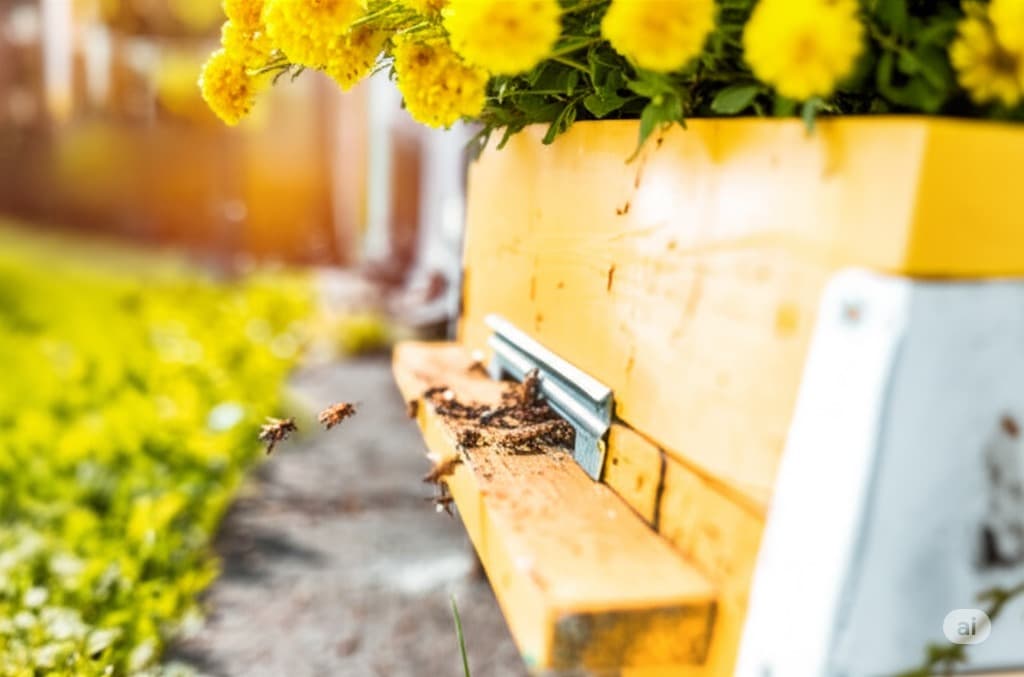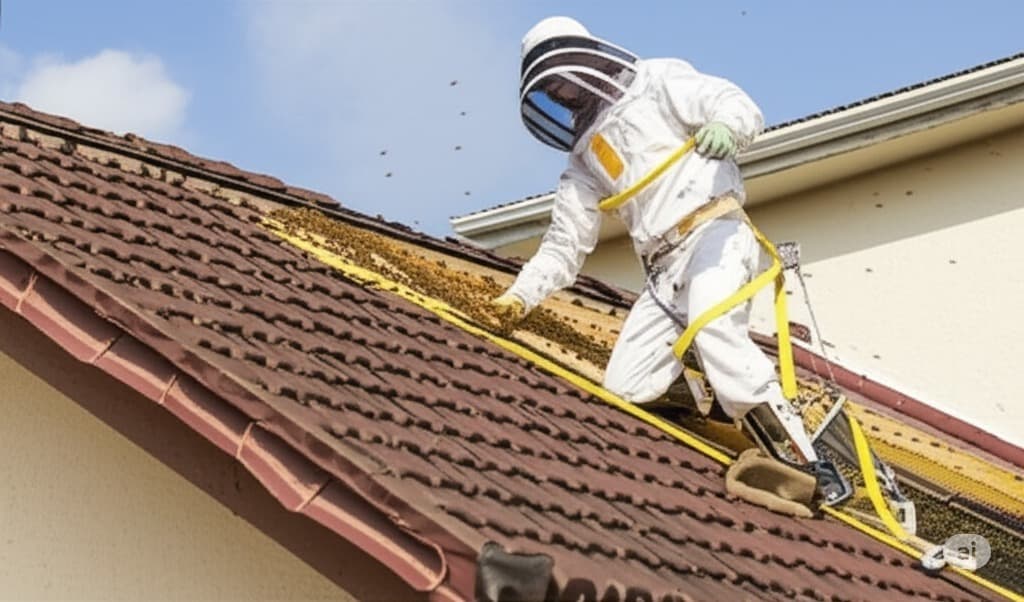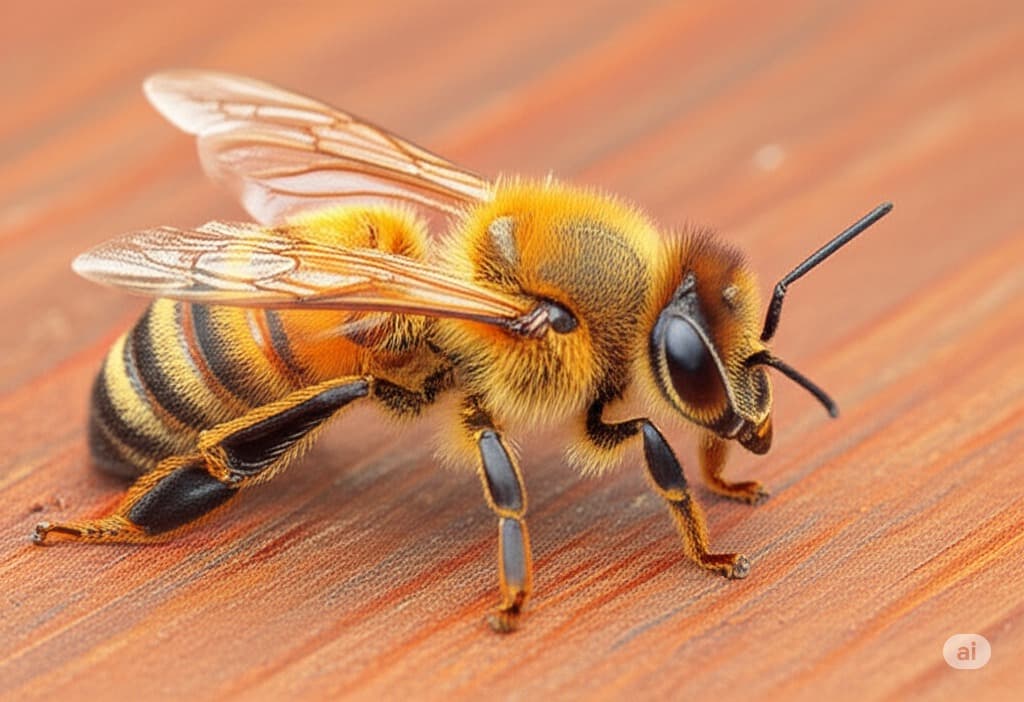
HUMANEBEE SOLUTIONS
Professional bee removal and relocation services that protect both your property and these essential pollinators.
Get a Free Quote Now
📝 Get a Free Quote Now

HUMANEBEE SOLUTIONS
Professional bee removal and relocation services that protect both your property and these essential pollinators.
📝 Get a Free Quote Now
Environmentally Responsible Bee Management
Safe, humane solutions for bee hives and swarms that protect both your property and these vital pollinators
Response
Preservation
Specialists
Relocation
Capture
Repairs
Strategies
Methods
Our Bee Management Approach
We specialize in humane bee removal and relocation services that protect both your property and these essential pollinators that are vital to our ecosystem.

Bee Conservation Specialists
Our trained apiarists safely remove and relocate honey bee colonies to local apiaries where they can continue their essential role as pollinators.
Swarm Capture & Relocation
We safely capture temporary bee swarms and relocate them to suitable environments where they can establish new colonies and continue their vital pollination work.
Established Hive Removal
For established hives in structures, we carefully extract the entire colony, including the queen, brood, and honeycomb, then safely relocate them to a new hive box maintained by local beekeepers.
Structural Repairs & Prevention
After removal, we repair entry points and damage caused by the hive, then implement preventative measures to discourage future bee colonies from establishing in your structures.
The Importance of Professional Bee Management
While bees are essential pollinators that support our ecosystem and food supply, colonies in or near structures can pose risks to people, especially those with allergies. DIY removal attempts often result in bee aggression, incomplete removal, or harm to the colony. Our professional approach ensures both your safety and the preservation of these vital pollinators.
- Protects people with bee allergies
- Preserves bee colonies
- Prevents structural damage
- Supports local beekeeping
Need Professional Bee Management?
Our bee specialists provide safe, humane solutions for bee swarms and established hives while protecting these essential pollinators.
Our Bee Management Process
Our comprehensive bee management process prioritizes both your safety and the preservation of these essential pollinators through humane capture and relocation methods.

Professional Assessment
Our bee management process begins with a thorough assessment by our trained specialists. We identify the bee species, determine if it's a temporary swarm or established colony, locate the hive or nest, and evaluate the risks based on proximity to living areas and the presence of individuals with allergies. This assessment allows us to develop the most appropriate, environmentally responsible management plan for your specific situation.
Customized Management Plan
Based on our assessment, we develop a tailored management plan that prioritizes both your safety and bee conservation. For honey bee swarms, we typically recommend capture and relocation to a local apiary. For established colonies in structures, we outline a comprehensive approach that includes colony extraction, structural repairs, and preventative measures. We explain all available options, associated costs, and timelines before proceeding with any work.
Safe Capture & Relocation
Our specialists use specialized equipment and protective gear to safely capture bee colonies. For honey bee swarms, we carefully collect the entire cluster, including the queen, and transfer them to a new hive box. For established colonies in structures, we may use bee vacuums, trap-outs, or controlled cut-outs to access and remove the entire colony, including brood comb and honey stores. The captured bees are then transported to local apiaries where they can continue their essential pollination work.
Structural Repairs & Prevention
After colony removal, we thoroughly clean the affected area to remove honeycomb, propolis, and other hive materials that might attract new bee colonies. We then repair entry points and damaged areas, using appropriate materials to restore the integrity of your structure. Finally, we implement preventative measures to discourage future bee colonies from establishing in the same location, such as sealing potential entry points and applying bee-deterrent treatments when appropriate.
Need professional bee management?
Our bee specialists provide safe, environmentally responsible solutions for bee swarms and established colonies.
Schedule Your ConsultationCommon Bee Species in Australia
Understanding the specific bee species on your property is essential for appropriate management. Each species has unique behaviors and requires tailored approaches.
Common Bee Species

HONEY BEES
Apis mellifera
Description
Professional honey bee management in Melbourne protects these essential pollinators while addressing structural concerns. Our specialists provide humane relocation services that preserve bee colonies while protecting your property.
Appearance
Golden-brown with darker bands, fuzzy bodies, and clear wings. Worker bees are 12-15mm long with pollen baskets on their hind legs. They have a distinctive amber coloration and are less aggressive than other bee species.
Behavior
Live in large colonies of 20,000-80,000 individuals with complex social structure. They communicate through dance language and produce honey and beeswax. Swarm when establishing new colonies, typically in spring.
Habitat
Prefer enclosed spaces like wall cavities, roof voids, and tree hollows. They need access to water and diverse flowering plants within 3km of their hive. Often found in suburban areas with gardens.
Risks & Management
Generally docile but will defend their hive when threatened. Stings can cause allergic reactions in sensitive individuals. Structural damage from honey and wax buildup in wall cavities over time.

HONEY BEES
Apis mellifera
Description
Professional honey bee management in Melbourne protects these essential pollinators while addressing structural concerns. Our specialists provide humane relocation services that preserve bee colonies while protecting your property.
Appearance
Golden-brown with darker bands, fuzzy bodies, and clear wings. Worker bees are 12-15mm long with pollen baskets on their hind legs. They have a distinctive amber coloration and are less aggressive than other bee species.
Behavior
Live in large colonies of 20,000-80,000 individuals with complex social structure. They communicate through dance language and produce honey and beeswax. Swarm when establishing new colonies, typically in spring.
Habitat
Prefer enclosed spaces like wall cavities, roof voids, and tree hollows. They need access to water and diverse flowering plants within 3km of their hive. Often found in suburban areas with gardens.
Risks & Management
Generally docile but will defend their hive when threatened. Stings can cause allergic reactions in sensitive individuals. Structural damage from honey and wax buildup in wall cavities over time.
Book A Service Now
Professional pest control inspection and treatment for your home
Frequently Asked Bee Questions
Find expert answers to common questions about bee identification, humane removal methods, relocation processes, and prevention strategies.
What's the difference between bees, wasps, and hornets?
Bees, wasps, and hornets have distinct characteristics: Bees are typically robust and hairy with flat rear legs for carrying pollen. They're generally non-aggressive unless defending their hive and can only sting once. Honey bees and bumble bees are important pollinators. Wasps are sleeker with narrow waists and smooth, shiny bodies. They're more aggressive, can sting multiple times, and include paper wasps and yellow jackets. Hornets are a type of wasp, but larger, with black and white (rather than yellow and black) markings. They build paper nests in trees or structures and can be highly aggressive when disturbed. Our specialists can accurately identify which type of stinging insect you're dealing with and recommend appropriate management strategies.
Why shouldn't I just kill bees on my property?
Honey bees and native bee species are essential pollinators that support our ecosystem and food supply—approximately one-third of the food we eat depends on bee pollination. Bee populations have been declining globally due to habitat loss, pesticides, climate change, and disease. When you choose humane bee removal and relocation instead of extermination, you're helping preserve these vital insects while still protecting your property. Additionally, killing honey bees often doesn't solve the problem, as abandoned honeycomb can attract other pests and cause structural damage. Our professional bee management services safely relocate colonies to appropriate environments where they can continue their important ecological role.
What's the difference between a swarm and an established colony?
Bee swarms and established colonies represent different stages of honey bee colony development and require different management approaches. A swarm is a temporary cluster of bees with a queen that has left an existing hive to establish a new colony. Swarms typically hang from tree branches or structures for 24-72 hours while scout bees search for a permanent home. They're generally docile as they have no hive to defend. Swarms can be easily captured and relocated by professionals. An established colony has found a permanent location (often within a structure) and built honeycomb for brood rearing and honey storage. These colonies are more defensive and require specialized extraction techniques to remove the entire colony, including honeycomb. Our bee specialists can determine whether you're dealing with a temporary swarm or established colony and implement the appropriate management strategy.
How do you safely remove bees without killing them?
Our humane bee removal process varies based on whether we're dealing with a swarm or established colony. For swarms, our specialists wear protective gear and carefully collect the entire cluster, including the queen, using specialized equipment. The captured swarm is then transferred to a new hive box and relocated to a local apiary. For established colonies in structures, we may use several techniques: 1) Bee vacuums that safely collect bees without harming them; 2) Trap-outs that allow bees to exit but not return to the hive; or 3) Controlled cut-outs where we carefully open the structure, remove the honeycomb with brood, secure it in frames, and collect the bees. In all cases, the captured bees are relocated to apiaries where they can continue their essential pollination work.
What happens to the bees after you remove them?
After removal, we transport the bees to local beekeepers and apiaries who have agreed to accept and care for the relocated colonies. For swarms, this typically involves transferring them directly into new hive boxes where they can establish themselves. For established colonies, we carefully secure any brood comb (containing developing bees) into frames that fit standard hive boxes, allowing the colony to continue developing. The beekeepers then monitor the relocated colonies, ensuring they have adequate resources and treating for any pests or diseases. These relocated bees become part of managed apiaries where they produce honey and provide pollination services for local agriculture and ecosystems. This approach benefits both property owners and the environment by resolving the immediate issue while preserving these essential pollinators.
How can I prevent bees from establishing on my property?
To discourage bees from establishing on your property: 1) Seal potential entry points in structures, including gaps around pipes, vents, and utility penetrations, cracks in siding, and openings under eaves; 2) Regularly inspect your property for early signs of bee activity, especially in spring and early summer when swarms are most active; 3) Remove or properly maintain hollow trees that might attract nesting bees; 4) Consider applying bee-deterrent treatments to areas that have previously attracted bees; 5) Keep garbage containers tightly sealed to avoid attracting wasps; and 6) Schedule annual preventative inspections with our specialists to identify and address potential bee attractants. While these measures can significantly reduce the likelihood of bee colonies establishing on your property, they're not guaranteed to prevent all bee activity, especially in areas with high bee populations.
What should I do if I find a bee swarm or hive?
If you discover a bee swarm or hive on your property: 1) Keep a safe distance—at least 20 feet from the bees; 2) Keep children and pets away from the area; 3) Do NOT disturb the bees by throwing objects, spraying water, or using store-bought insecticides, as this may provoke defensive behavior; 4) Contact our professional bee management team immediately for assessment; 5) If the bees are inside a structure, note any bee flight patterns to help our specialists locate the colony; and 6) If someone is stung and shows signs of an allergic reaction (difficulty breathing, swelling beyond the sting site, dizziness), seek emergency medical attention immediately. Our specialists will respond promptly to assess the situation and recommend the most appropriate, environmentally responsible management approach.
Are your bee management services available for emergencies?
Yes, we offer emergency bee management services for situations that require immediate attention, such as: 1) Swarms or colonies in high-traffic areas where people cannot avoid proximity; 2) Bees inside living spaces; 3) Individuals with known bee allergies on the property; and 4) Aggressive bee behavior that poses an immediate safety risk. Our emergency response team is available 7 days a week and can typically respond within 2-4 hours of your call. For emergency situations, please call our direct line rather than booking online to ensure the fastest possible response. We'll provide guidance on temporary safety measures until our specialists arrive and implement a permanent solution.
Have more questions about bee management?
Our bee specialists are ready to answer your questions and provide expert guidance for your specific situation.
Schedule a Consultation